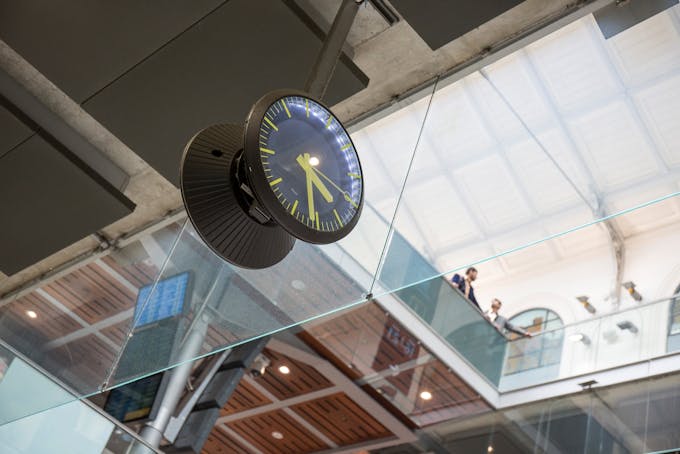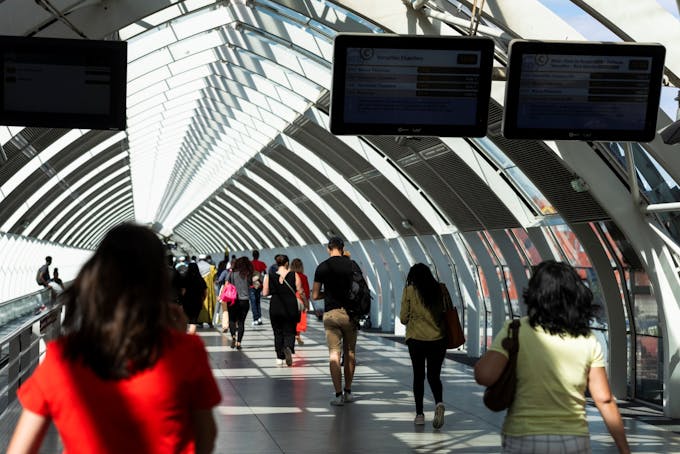Improving punctuality on the RER B: a 14-point action plan

© Jean-Marc GOURDON - Ile-de-France Mobilités
Since 2015, the RER B line has experienced a decline in quality of service, both from the point of view of the punctuality of trains and the recurrence of malfunctions, impacting the travel conditions of thousands of Ile-de-France residents.
To better understand the sources of malfunctions and restore a quality of service that meets the needs of passengers: Valérie Pécresse, President of Île-de-France Mobilités and the Île-de-France Region, has mandated Yves Ramette (railway expert and former Director General of RATP) alongside two specialised design offices (Setec and Rail Concept) to carry out an audit.
The objective? Study the problem, identify the causes and implement a concrete action plan to restore smooth traffic on the line and improve punctuality by +1% each year.
Audit of the RER B: an initiative integrated into a massive improvement policy
The audit, commissioned in March 2023, is part of a massive investment policy, led by Île-de-France Mobilités to improve the travel conditions of Ile-de-France residents on line B, the second busiest line in Europe (+ 1 million passengers per day).
To this same end, €3.5 billion has already been invested in various actions, including the order of 146 new and more efficient train sets on the RER B (the MI20) and the implementation of the "NExTEO" process, a signalling and traffic control system that allows for better reliability and punctuality on the line.
Step 1: Make a diagnosis
In order to find concrete solutions that are above all adapted to the problems on the ground encountered by the RER B, a fine-tooth comb study was carried out, in order to identify all the problems involved in the decline in the quality of service on the line.
The diagnosis is clear, the RER B is suffering from numerous operating incidents, caused by infrastructure and rolling stock that are no longer able to meet the increase in ridership and user expectations.
In addition, there is a volume of major work on the line and a multiplicity of players involved in the operation of the RER B (Île-de-France Mobilités, RATP, SCNF Transilien Voyageurs and SNCF Réseau), whose full collaboration must be ensured for the efficient operation and maintenance of the line.

Passengers at Massy station - © Cyril BADET - Ile-de-France Mobilités
Step 2: Construct a line of work
After a period of diagnosis and an in-depth study that has made it possible to understand, in detail, the causes of the decline in quality observed since 2015, five areas for improvement have been highlighted:
- Finding rolling stock availability in line with needs
- Adapting traffic management to the new ridership rate
- Strengthening coordination around the work
- Strengthening the positive dynamic in the governance of the RER B
- Developing common tools and information systems
Step 3: Find concrete solutions
Fourteen concrete actions have been defined to improve the travel conditions of the RER B, some of which can be implemented from the end of 2023:
- Adapt the renovation of the current trains to increase the number of trains available from January 2024.
- Improve the efficiency of the Mitry rolling stock maintenance site.
- Define contractual performance objectives between SNCF Réseau and Île-de-France Mobilités.
- Adapt the organisation of the entire line to strengthen the responsibility of RATP and SNCF companies.
- Implement a scheduling tool shared between SCNF and RATP, common to the two maintenance sites of Mitry and Massy, to simplify technical interventions under maintenance control and develop a tool for locating trains to the north of the line.
- Guarantee the use of direct lanes when the express CDG is put into service by prioritising the switch to the RER B in disrupted situations.
- Anticipate the pooling of line-wide works between the infrastructure managers at SNCF Réseau and RATP.
- Improve the coordination of the actors between the planning of the works and the maintenance activity on the Mitry workshop.
- Strengthen SNCF Réseau's means of intervention for a rapid resolution of infrastructure incidents by facilitating the movement of agents on the road and the simultaneous handling of several incidents.
- Facilitate regulatory changes on the SNCF perimeter to adapt to the particularities of the RER B and support the associated operational changes.
- Implement tools to facilitate the operation of traffic at key points on the line.
- Regularly reassess the effectiveness of the measures aimed at limiting external incidents : via flow regulators on the platforms, management of fast passenger discomfort and dog detection teams.
- Unify information systems and practices to identify incidents and their impacts by periodically performing critical analyses of this data and reporting on trends in the evolution of the line's performance over the long term.
- Establish a Single Command Centre (CCU) for RER B and D. This last action will be operational in 2030 in La Plaine Saint-Denis. Wanted and financed by Île-de-France Mobilités, its action will be decisive in avoiding cascading incidents and reducing the duration of incidents.